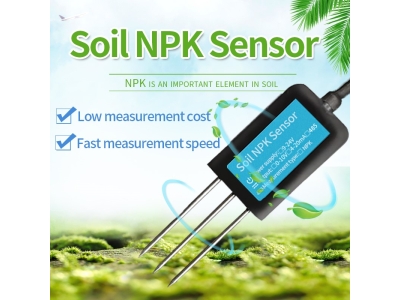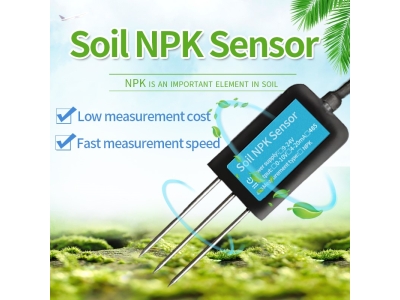In agriculture, maximizing crop yield and ensuring high-quality produce are essential for sustainable food production. Soil plays a critical role in plant growth, and understanding its composition and moisture levels is key to optimizing agricultural practices. Soil sensor technology has emerged as a powerful tool for farmers, allowing them to monitor soil conditions accurately and make informed decisions about irrigation, fertilization, and crop management. This article explores how soil sensor technology contributes to improving crop yield and quality, highlighting its benefits, applications, and future potential.
The Importance of Soil Management in Agriculture : Soil health and management are fundamental in agriculture. Healthy soil provides essential nutrients to plants, supports root development, regulates water drainage, and maintains a balanced ecosystem. However, soil conditions can vary significantly within a field, leading to uneven crop growth, nutrient deficiencies, and yield loss.
Traditionally, farmers relied on visual inspection and manual testing methods to assess soil conditions. These methods are time-consuming, subjective, and often provide limited insights into the complex dynamics of soil health. Soil sensor technology overcomes these limitations by providing real-time, accurate, and comprehensive data about soil properties.

Understanding Soil Sensor Technology : Soil sensor technology utilizes various sensors and monitoring systems to measure critical soil parameters. These sensors can detect soil moisture, temperature, pH levels, electrical conductivity, and nutrient levels. They are designed to be inserted directly into the soil, providing instant readings and transmitting data wirelessly to a central monitoring system.
The sensors can be deployed at different depths and locations within a field to capture a representative range of soil conditions. This spatial data allows farmers to identify variations in soil properties across their fields and tailor management practices accordingly.
Optimizing Irrigation and Nutrient Management : One of the primary applications of soil sensor technology is optimizing irrigation and nutrient management. Soil moisture sensors provide real-time data on soil water content, enabling farmers to precisely determine when and how much to irrigate. This prevents under or over-watering, which can lead to root stress, nutrient leaching, and reduced crop health.
By understanding the moisture levels at different soil depths, farmers can also adjust irrigation practices to promote robust root development. Deep-rooted plants are more resilient to drought and have improved access to nutrients, resulting in higher crop yields.
Soil sensor technology also allows farmers to monitor nutrient levels in the soil. Nutrient sensors measure the concentration of essential elements such as nitrogen, phosphorus, potassium, and micronutrients. By regularly monitoring these levels, farmers can identify deficiencies or excesses and make informed decisions about fertilization strategies. This targeted approach reduces fertilizer waste, minimizes environmental impacts, and ensures optimum nutrient uptake by crops.
Detecting Soil Compaction and Disease Risks (: Soil compaction and disease risks are significant challenges for farmers. Compacted soils restrict root growth and limit water and nutrient absorption, leading to stunted plant growth and lower yields. Soil sensor technology can detect soil compaction by measuring soil bulk density and pore size distribution. This information helps farmers identify areas with high compaction levels and take corrective measures such as deep tillage or soil aeration.
Additionally, soil sensors can aid in assessing disease risks. Certain pathogens thrive in specific soil conditions, and the sensors can provide data on temperature, moisture, and pH levels that contribute to disease development. With this information, farmers can implement preventive measures, such as crop rotation, proper drainage, or targeted disease management practices, reducing the risk of crop losses due to diseases.
Future Developments and Challenges : The future of soil sensor technology holds significant potential for further enhancing crop yield and quality. Advances in sensor design, wireless connectivity, and data analytics will enable more precise and comprehensive soil monitoring. Integration with other technologies such as satellite imagery and weather forecasting will provide farmers with a holistic view of their fields, facilitating proactive decision-making.
However, challenges remain in the widespread adoption of soil sensor technology. Cost is a significant barrier for small-scale farmers, as sensor systems can be expensive to purchase and maintain. Standardization of sensor data and calibration procedures is also crucial to ensure accurate and comparable measurements across different sensor types an






